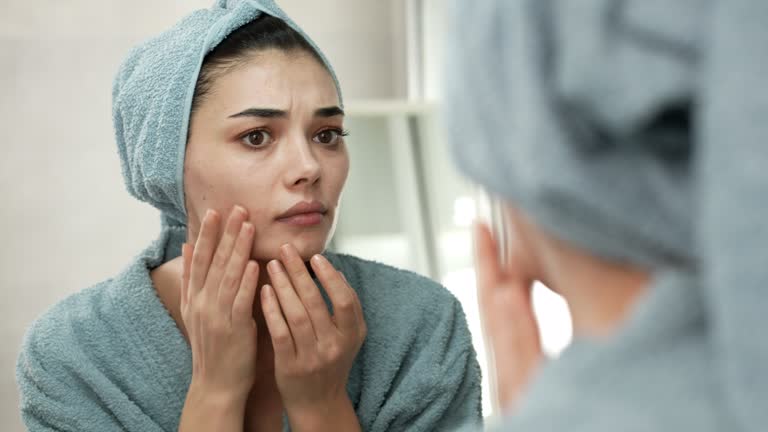Understanding Bacterial Folliculitis: A Guide for the Insightful Beautician
Bacterial folliculitis can often be a complex and challenging issue for both clients and beauticians seeking effective management strategies. This detailed guide is designed to provide an engaging and thorough look into this prevalent skin problem. Our goal is to equip beauticians with the crucial knowledge and insights necessary to assist their clients effectively.
For any professional in the beauty industry, grasping the intricacies of various skin conditions is vital not only for effective treatments but also for offering appropriate advice to clients. Lets explore what bacterial folliculitis is and how you, as a dedicated skincare expert, can help your clients address it.

What is Bacterial Folliculitis?
Bacterial folliculitis refers to an infection affecting the hair follicles, most commonly caused by the bacterium Staphylococcus aureus. This condition is characterized by inflamed, red, and often itchy or painful pustules, which can lead to discomfort and self-consciousness for clients. Beauticians play an essential role in identifying these symptoms and recommending suitable actions.
Identifying the Symptoms
It's crucial for beauticians to recognize the signs of bacterial folliculitis. This condition typically appears as clusters of small red bumps or white-headed pimples filled with pus, with the skin possibly exhibiting slight swelling.
Moreover, understanding how to distinguish typical folliculitis symptoms from more severe skin issues is important, as timely referrals to a dermatologist might be needed. You can explore this further at the Health Direct.
Causes and Contributing Factors
The main trigger for bacterial folliculitis is often found in settings where bacteria thrive, such as gym locker rooms or hot tubs. Additionally, skincare products or tight clothing that trap sweat and heat against the skin can worsen the situation. Beauticians can educate clients about these risk factors to help prevent recurrence.
Risk Factors to Keep in Mind
Clients who frequently shave, wear form-fitting garments, or use non-breathable materials might be more prone to this condition. Also, individuals with compromised immune systems or underlying health problems may be at a higher risk. Providing personalized advice based on an individuals circumstances can lead to significant improvements.
Professional Treatments and Client Management
While some instances of bacterial folliculitis clear up on their own, others may require targeted treatment approaches. As a beautician, staying informed about potential therapies can guide clients toward effective solutions.
Topical and Oral Medications
For more stubborn cases, dermatologists might suggest topical antibiotics or, in some cases, oral antibiotics. Although beauticians can't prescribe these medications, they can offer guidance on how such treatments may vary with different skin types and sensitivities.
Additionally, ongoing care tips include advising clients to maintain cleanliness in the affected areas and avoid irritants as well as recognizing when it would be appropriate to refer them to a healthcare professional for more serious intervention.
Alternative Treatment Options
Alternative remedies such as Tea Tree Oil or warm compresses may also be helpful alongside other treatments. Providing clients with advice on safe and effective home care demonstrates a comprehensive approach to skincare.
Preventive Measures and Long-Term Care
Preventing bacterial folliculitis is often more effective than curing it! Encouraging good hygiene habits, suggesting non-comedogenic products, and educating clients on proper aftercare can greatly reduce the chance of future outbreaks. Continually enhancing your knowledge can further boost your competence as a beautician.
For more detailed advice on folliculitis prevention, you might find this informative resource helpful.
Conclusion
By understanding and effectively communicating about bacterial folliculitis, you can significantly elevate the level of care you provide as a beautician. With accurate knowledge and proactive strategies, you can assist clients in navigating this common yet troublesome condition. In doing so, you not only enhance your skill set but also your clients' faith in your expertise.

Frequently Asked Questions
What is the best approach for treating bacterial folliculitis?
While mild instances may resolve independently with appropriate hygiene, more severe cases may require topical or oral antibiotics. A dermatologist can provide the optimal treatment based on the situation's severity.
How can I help prevent bacterial folliculitis for clients?
Promoting good hygiene practices, suggesting suitable skincare products, and recommending breathable clothing can significantly lower the risk of developing bacterial folliculitis.
Is consulting a doctor necessary for folliculitis?
In many cases, especially persistent or severe instances, its advisable to seek a dermatologists expertise to rule out other skin conditions and receive specialized treatment. Beauticians can assist with initial assessments and refer clients as necessary.

